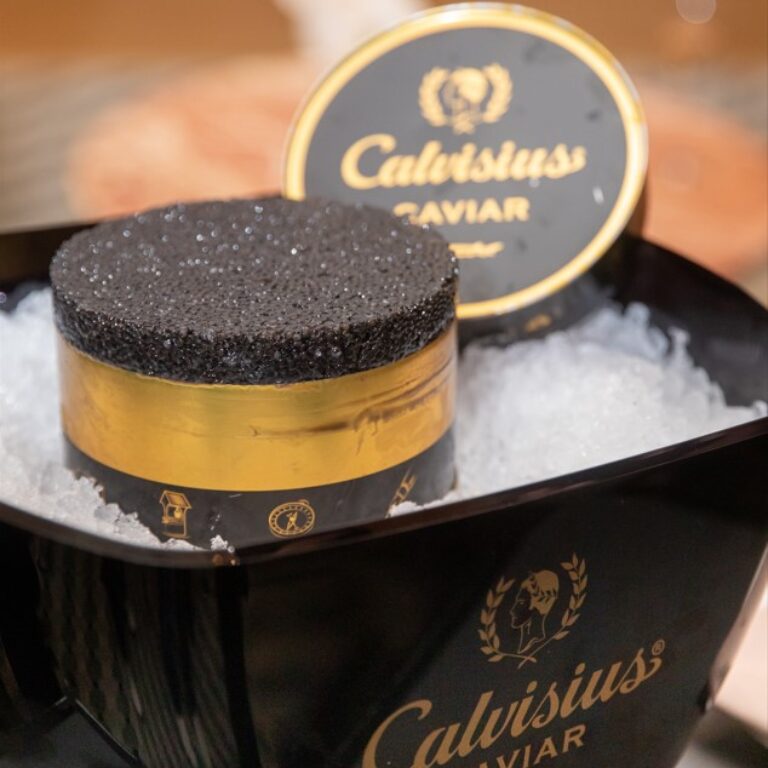
How to taste Caviar
Calvisius Caviar is a gourmet product that deserves to be appreciated in all its nuances. To fully enjoy its essence, you can savor it pure on a mother-of-pearl spoon or on your hand, in the famous Caviar Bump.
- Visual Observation
The tasting begins with the visual aspect. Upon opening the caviar tin, observe the eggs: they should be whole, firm, and well separated. An excess of oil is a sign of defect, indicating that the eggs have broken, releasing oil.
- Smell
Next, move on to smell. Bringing your nose close to the caviar, you should perceive an almost imperceptible scent with a slight marine note. If you detect odors of fermented fish or herring, discard the product, as it has not been properly preserved.
- Taste
Finally, the taste: when the eggs are pushed against the palate, they burst, creating an explosion of flavors and aromas. Remember, caviar should not be chewed; use your tongue to crush the eggs against your palate and perceive all the nuances. Be cautious of caviar that makes a “pop”; if it is too firm, it may have been pasteurized.
Depending on the type of caviar, you may perceive notes of butter, pastry, and dried fruit, merging into a rich iodized and marine aroma, with hints of oyster and raw shrimp, along with umami, the sixth taste. Enjoyed pure, caviar pairs perfectly with a glass of brut or satèn sparkling wine.
Remember that each type of Caviar is unique and presents notes and nuances characteristic of the specific sturgeon species from which it originates.
Malossol Caviar
All these rules apply to Malossol Caviar, characterized by low salt content and unpasteurized. These features enhance the uniqueness of each type of caviar, derived from different sturgeon species. At Calvisius, we only farm pure species, no hybrids!
Summary of How to Taste Caviar
- Sight: should not present oil; the eggs should be whole and firm.
- Smell: light scent, with no foreign odors.
- Taste: delicate, refined, with initial sweet notes (butter, egg yolk), evolving into elegant marine and iodized aromas.
Discover more about how to taste Calvisius Caviar and immerse yourself in an unparalleled gastronomic experience.



